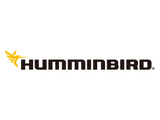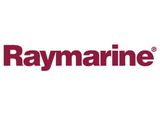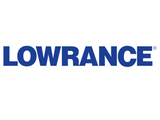 MAXIMIZING RADAR PERFORMANCE: ADVANCED TECHNIQUES FOR ANGLERS
MAXIMIZING RADAR PERFORMANCE: ADVANCED TECHNIQUES FOR ANGLERS
As a modern angler, having a reliable marine radar system is absolutely essential for navigating safely and maximizing your fishing success on the water. Marine radars provide valuable information about the surroundings, ensuring situational awareness and enhancing your boating experience.
To help boaters have the most fun and enjoyment on the water, Angler’s World offers this comprehensive guide to optimize the performance of your marine radar. From exploring your radar’s settings to utilizing advanced features, we will provide tips and recommendations for anglers who prefer DIY maintenance.
TABLE OF CONTENTS:
- Maximizing Radar Performance: Advanced Techniques for Anglers
- Introduction
- Understanding Marine Radars
- Setting Up Your Radar
- Adjusting Radar Gain and Sensitivity
- Start with Automatic Mode
- Fine-Tuning
- Experimentation
- Utilizing Radar Overlay
- Setting Up Guard Zones and Alarms
- Adjusting Sea Clutter and Rain Clutter Settings
- Perform Regular Radar Maintenance and Calibration
- Marine Radar Installation: Tools and Hardware
- Step-by-Step Guide for Marine Radar Installation
- Top Marine Radar Brands and Products
- B&G: Performance and Precision
- Furuno: Unparalleled Performance
- Garmin: Innovation and Versatility
- Humminbird
- Raymarine: Cutting-Edge Technology for Boaters
- Lowrance: Enhancing Navigation and Fishing Success
- Simrad: Superior Performance and Reliability
- SI-TEX
- Shop Angler’s World Today!
UNDERSTANDING MARINE RADARS
What are Marine Radars and How Do They Work?
Marine radars are electronic devices that use radio waves to detect and track objects in and around your boat. By emitting radio waves and analyzing the reflections, radars provide valuable information about the location, distance, and movement of other vessels, land masses, and weather patterns. This real-time data helps you navigate safely, avoid collisions, and locate potential fishing hotspots.
Let's take a closer look at some of the key features and benefits of marine radars.
KEY FEATURES AND BENEFITS OF MARINE RADARS
|
Marine Radar Features |
Benefits |
|
Collision Avoidance |
Marine radars help you detect and track other boats, obstacles, and hazards, providing critical information to avoid potential collisions. |
|
Navigation Assistance |
Radars provide accurate position information, helping you navigate through congested areas, narrow channels, and unfamiliar waters with confidence. |
|
Weather Monitoring |
Marine radars can detect weather patterns, allowing you to stay ahead of storms, track approaching rain showers, and avoid dangerous weather conditions. |
|
Target Identification |
Advanced radar systems can differentiate between moving targets like boats and stationary objects like land masses, assisting in precise target identification for successful fishing expeditions. |
SETTING UP YOUR RADAR
Now that we have the basics of what radars are used for in boating, let’s turn our attention to setting up your radar:
Adjusting Radar Gain and Sensitivity
Radar range and gain settings are crucial for maximizing the effectiveness of your marine radar. Range determines the distance at which objects can be detected, while gain controls the sensitivity of the radar receiver. Adjust the range based on your fishing environment, balancing the need for long-range coverage with the ability to detect smaller targets.
Consider the following tips:
Tips for Fine-Tuning Your Radar
- When adjusting gain, start with lower settings and gradually increase until the desired level of target visibility is achieved without excessive clutter.
- Pay attention to sea conditions. In rough seas, higher gain settings may be necessary to overcome wave reflections, but be cautious of increasing it too much, as it can introduce unwanted noise.
- Consider the range at which you are operating the radar. Higher sensitivity settings may be more beneficial when operating at longer ranges, while lower sensitivity can be effective for short-range operations.
Utilizing Radar Overlay
Many modern chartplotters offer radar overlay functionality, allowing you to overlay radar data onto your electronic chart display. This integration provides a comprehensive view of your surroundings, combining radar information with charted features. By enabling radar overlay, you can more accurately navigate and identify potential fishing grounds, even in low visibility conditions.
Setting Up Guard Zones and Alarms
Take advantage of the guard zone and alarm features available on marine radars. Guard zones allow you to define specific areas where you want to be alerted if another vessel or object enters that zone.
This feature is particularly useful for maintaining situational awareness while focusing on your fishing activities. Configure audible or visual alarms to notify you when a target enters or leaves a guard zone, ensuring you stay safe and informed on the water.
Adjusting Sea Clutter and Rain Clutter Settings
Sea clutter and rain clutter are common radar disturbances that can hinder target detection. Fortunately, most marine radars offer settings to mitigate these interferences. Adjust the sea clutter setting to filter out false echoes caused by wave reflections, especially in rough seas.
Similarly, adjust the rain clutter setting to minimize the effects of rain or heavy precipitation on radar performance. Fine-tuning these settings improves the radar's ability to distinguish actual targets from environmental clutter, allowing you to focus on detecting potential fishing opportunities.
Perform Regular Radar Maintenance and Calibration
To ensure optimal radar performance, it is essential to conduct regular maintenance and calibration. Here are the basics:
- Keep the radar antenna clean and free from obstructions that can interfere with signal transmission and reception.
- Check for any loose connections or damaged cables that may affect the radar's functionality.
- Additionally, consult the manufacturer's guidelines for calibration procedures, which may involve adjusting the radar's alignment, tuning, or bearing alignment.
Proper maintenance and calibration enhance the accuracy and reliability of your marine radar, improving your overall fishing experience.
MARINE RADAR INSTALLATION: TOOLS AND HARDWARE
- Marine Radar Unit: Choose a marine radar unit suitable for your boat's size and navigation needs. Consider factors such as range, power output, and additional features.
- Radar Dome or Array: This is the physical component of the radar that emits and receives radio waves. Select a dome or array appropriate for your vessel's size and installation requirements.
- Mounting Hardware: Depending on your boat's configuration, you may need specific mounting hardware to secure the radar dome or array. This can include brackets, clamps, or mounting plates.
- Wiring and Cables: Ensure you have the necessary wiring and cables to connect the radar unit to a power source and display unit. This includes power cables, data cables, and connectors compatible with your radar unit.
- Display Unit: A compatible display unit is required to view the radar data. Ensure your chosen display unit supports the radar model you have selected.
- Mounting Tools: Basic tools such as screwdrivers, wrenches, and a drill may be required for mounting the radar unit and running cables.
- Weatherproofing Materials: Use marine-grade sealants, tape, and heat-shrink tubing to protect connections and ensure a watertight installation.
STEP-BY-STEP GUIDE FOR MARINE RADAR INSTALLATION
If you’ve got the tools and the hardware, installing a marine radar on your boat is a straight-forward process and a great project for DIY boaters:
- Choose the Installation Location: Select a suitable location for mounting the radar dome or array. Consider factors such as the boat's layout, obstruction-free view, and proximity to other equipment.
- Mount the Radar Dome or Array: Follow the manufacturer's instructions to securely mount the radar dome or array using the appropriate mounting hardware. Ensure it is positioned correctly and aligned for optimal performance.
- Install the Display Unit: Determine the ideal location for the display unit, considering visibility and accessibility. Mount the display unit using the provided brackets or in a compatible existing console or dashboard.
- Run Power and Data Cables: Carefully route the power and data cables from the radar unit to the display unit. Ensure cables are secured and protected against chafing or damage. Connect the cables to the respective ports on both the radar unit and display unit.
- Connect Power Source: Connect the radar unit to a reliable power source, such as the boat's electrical system or a dedicated power supply. Follow the manufacturer's guidelines for proper voltage and connection.
- Connect Data Cables: Connect the data cables from the radar unit to the display unit, ensuring proper alignment of connectors and a secure connection. Consult the manufacturer's instructions for specific cable routing and connection details.
- Check Connections and Secure Wiring: Double-check all connections, ensuring they are tight and properly secured. Use marine-grade sealants or tape to weatherproof connections and protect against moisture intrusion.
- Test and Configure: Power on the radar unit and display unit. Follow the manufacturer's instructions to configure the radar settings, including range, sensitivity, and any additional features. Perform a test to verify radar functionality and ensure proper data display on the unit.
- Fine-Tune and Calibrate: Fine-tune the radar settings based on your specific requirements and the conditions in which you will be operating. Calibrate the radar system according to the manufacturer's instructions to ensure accurate target tracking. (Refer to the Setting Up Your Radar section above for more info)
- Perform Sea Trials: Take the boat out for sea trials to test the radar's performance in various conditions. Make adjustments as necessary to optimize radar performance and ensure reliable operation.
Note: It is highly recommended to consult the manufacturer's installation instructions and guidelines specific to your radar unit for detailed and accurate installation procedures. As with any installation for your boat, consider seeking professional assistance with a marine mechanic if you are unsure or inexperienced with marine electronics installations.
TOP MARINE RADAR BRANDS AND PRODUCTS
Angler’s World is proud to offer a wide selection of marine radars from trusted, high-quality manufacturers:

B&G: Performance and Precision
B&G marine radar systems are known for their exceptional performance, precision, and advanced features, making them a top choice for sailors and boating enthusiasts.
With cutting-edge technologies like Broadband Radar, B&G radar units provide accurate and reliable data for confident navigation and situational awareness. The high-resolution displays offer clear and detailed radar images, ensuring optimal visibility and easy interpretation.
B&G radar systems also feature advanced target detection capabilities, enabling effective tracking of vessels and identification of potential hazards. With user-friendly interfaces and intuitive controls, B&G radar units offer effortless operation and customization, enhancing the overall boating experience.
B&G RADARS AND B&G RADAR ACCESSORIES AVAILABLE AT ANGLER'S WORLD
- BG Zeus 3S 12 Combo Multi-Function Sailing Display Radar Bundle HALO20+ 20" Radar Dome - No HDMI Video Outport [000-15562-002]
- BG HALO20 20" Radar Dome w/20M Cable [000-14540-001]
- BG HALO20+ 20" Radar Dome w/20M Cable [000-14539-001]
- BG HALO24 Radar Dome w/Doppler Technology - 20m Cable [000-14538-001]
- BG Vulcan 9 Radar Bundle w/HALO20 Radar [000-15620-001]
- BG Zeus3S 9 - 9" MFD Bundle w/HALO20+ Radar [000-15561-001]

Furuno: Unparalleled Performance
With state-of-the-art signal processing and target detection capabilities, Furuno radar units deliver precise and accurate radar data, ensuring optimal situational awareness on the water. The high-definition displays provide clear and detailed images, allowing boaters to easily identify targets and navigate with confidence.
Furuno radar systems also offer advanced features such as Automatic Clutter Elimination, which reduces unwanted clutter and enhances target visibility, and Fast Target Tracking, which allows for quick and accurate tracking of moving objects. Additionally, their robust construction and resistance to extreme weather conditions ensure reliable performance in even the harshest marine environments.
FURUNO RADARS AND FURUNO RADAR ACCESSORIES AVAILABLE AT ANGLER'S WORLD:
- Furuno DRS12AX 12kW UHD Digital Radar - Less Antenna Cable [DRS12AX]
- Furuno Cable Assembly f/1935 Radar - 15M [001-409-580-00]
- Furuno 12V-24V DC 16 Amp Converter f/DRS25AX X-Class Open Array - Newmar [NEW-12V-24V-16A]
- Furuno 12V-24V 7 Amp Converter f/DRS12AX X-Class Open Array - Newmar [NEW-12V-24V-7A]
- Furuno 15M Power Cable f/DRS4W [001-266-010-00]
- Furuno 1st Watch Wireless Radar w/o Power Cable [DRS4W]
- Furuno 6kW Gearbox [RSB0070-059A]

Garmin: Innovation and Versatility
Garmin radar units are known for their innovation and versatility, offering a range of features and functions to meet the diverse needs of boaters, from collision avoidance to weather tracking.
GARMIN RADARS AND GARMIN RADAR ACCESSORIES AVAILABLE AT ANGLER'S WORLD:
- Garmin GMR xHD2 4' Antenna Array [010-01333-03]
- Garmin GMR 424 xHD2 Open Array Radar & Pedestal [K10-00012-08]
- Garmin GMR 18 HD+ Dome Radar [010-01719-00]
- Garmin Voltage Converter Unit [S11-01315-30]
- Garmin GMR 424 xHD2 Pedestal Only. [010-01333-00]
- Garmin Radar Power Cable [010-12067-00]
- Garmin GMR 24 xHD Radar w/15m Cable [010-00960-00]
- Garmin GMR 18 xHD Radar w/15m Cable [010-00959-00]

Humminbird
Humminbird marine radar systems offer advanced features such as dual range technology, CHIRP pulse compression, and specialized Bird Mode for precise target separation, improved detection, and identification of birds. With seamless integration, user-friendly interfaces, and reliable performance, Humminbird radar units provide boaters with enhanced situational awareness and accurate target tracking for a safer and more efficient navigation experience.
HUMMINBIRD RADARS AVAILABLE AT ANGLER'S WORLD

Raymarine: Cutting-Edge Technology for Boaters
Raymarine marine radar systems are known for their cutting-edge technology, delivering advanced features such as superior target detection, high-definition displays, and seamless integration with other marine electronics.
With their state-of-the-art radar technologies, Raymarine radar units provide boaters with exceptional performance and precise target tracking, ensuring enhanced situational awareness and safe navigation on the water. Whether it's the innovative CHIRP pulse compression technology or the intuitive user interfaces, Raymarine radar systems offer boaters cutting-edge solutions for their radar needs.
RAYMARINE RADARS AND RAYMARINE RADAR ACCESSORIES AVAILABLE AT ANGLER'S WORLD:
- Raymarine Cyclone Radar w/6 Open Array 15M Cables [T70493]
- Raymarine Cyclone 6 Open Array Only [E70630]
- Raymarine Cyclone 4 Open Array Only [E70629]
- Raymarine Cyclone 3 Open Array Only [E70628]
- Raymarine Cyclone Pro Pedestal - 110W [E70621]
- Raymarine Cyclone Pedestal - 55W [E70620]
- Raymarine Cyclone Pro Radar w/6 Open Array 15M Cables [T70496]
- Raymarine Cyclone Pro Radar w/4 Open Array 15M Cables [T70495]
- Raymarine Cyclone Pro Radar w/3 Open Array 15M Cables [T70494]
- Raymarine Cyclone Radar w/4 Open Array 15M Cables [T70492]
- Raymarine Cyclone Radar w/3 Open Array 15M Cable [T70491]
- Raymarine Magnum 6 Array [E70491]
- Raymarine Magnum 4 Array [E70490]
- Raymarine Magnum 12kW Pedestal [E70487]
- Raymarine Magnum 4kW Pedestal [E70484]
- Raymarine 12kW Magnum w/6 Array 15M RayNet Radar Cable [T70414]
- Raymarine 12kW Magnum w/4 Array 15M RayNet Radar Cable [T70412]
- Raymarine 4kW Magnum w/6 Array 15M RayNet Radar Cable [T70410]
- Raymarine 4kW Magnum w/4 Array 15M RayNet Radar Cable [T70408]
- Raymarine Quantum 2 Q24D Radar Doppler w/15M Power Data Cables [T70417]
- Raymarine Quantum 2 Q24D Radar Doppler w/10M Power Data Cables [T70416]
- Raymarine Quantum 2 Q24D Dopper Radar - No Cable [E70498]
- Raymarine Quantum Q24C Radome w/Wi-Fi, 15M Ethernet Cable & Power Cable [T70266]
- Raymarine Quantum Q24W Radome w/Wi-Fi Only - 10M Power Cable Included [E70344]
- Raymarine Quantum Q24C Radome w/Wi-Fi & Ethernet - 10M Power Cable Included [E70210]
- Raymarine Quantum Q24C Radome w/Wi-Fi & Ethernet - 10M Power & 10M Data Cable Included [T70243]
- Raymarine RD418HD Hi-Def Digital Radar Dome w/10M Cable [T70168]
- Raymarine RD424HD 4kW Digital Radar Dome w/10M Cable [T70169]
- Raymarine RD424HD 4kw 24" HD Digital Radome (no cable) [E92143]
- Raymarine RD418HD 4kW 18" HD Digital Radome (no cable) [E92142]

Lowrance: Enhancing Navigation and Fishing Success
Lowrance marine radar systems are designed to enhance navigation and fishing success with features such as target tracking, high-definition displays, and advanced connectivity options.
With precise target tracking capabilities and customizable settings, Lowrance radar units allow boaters to efficiently locate and monitor other vessels, buoys, and potential hazards on the water. The high-definition displays provide clear and detailed radar images, ensuring optimal visibility and situational awareness. Additionally, Lowrance radar systems offer advanced connectivity options, allowing seamless integration with other marine electronics for a comprehensive onboard navigation system.
LOWRANCE RADARS AND LOWRANCE RADAR ACCESSORIES AVAILABLE AT ANGLER'S WORLD:
- Lowrance HALO20 20" Radar Dome w/5M Cable [000-14543-001]
- Lowrance HALO20+ 20" Radar Dome w/5M Cable [000-14542-001]

Simrad: Superior Performance and Reliability
With exceptional target tracking capabilities and precise radar data, Simrad radar units enable boaters to confidently navigate and monitor surrounding vessels, obstacles, and weather conditions.
The high-definition displays with multi-panel support offer crystal-clear images and customizable views, ensuring optimal visibility and ease of interpretation. Simrad radar systems also incorporate advanced technologies like Dual Range functionality, allowing simultaneous monitoring of different radar ranges for comprehensive situational awareness. Additionally, their user-friendly interfaces and intuitive controls make operation and customization straightforward, enhancing the overall user experience.
With durable construction and resistance to harsh marine environments, Simrad radar units provide reliable performance even in challenging conditions, ensuring boaters can navigate with confidence.
SIMRAD RADARS AND SIMRAD RADAR ACCESSORIES AVAILABLE AT ANGLER'S WORLD:
- Simrad NSX 3012 Radar Bundle - HALO20+ Radar Dome Active Imaging 3-in-1 Transducer [000-15378-001]
- Simrad NSX 3009 Radar Bundle - HALO20+ Radar Dome Active Imaging 3-in-1 Transducer [000-15377-001]
- Simrad HALO20+ 20" Radar Dome w/10M Cable [000-14536-001]
- Simrad GO9 XSE Chartplotter Radar Bundle HALO20+ Active Imaging 3-in-1 Transom Mount Transducer C-MAP Discover Chart [000-15617-002]

SI-TEX
SI-TEX marine radar systems offer advanced target tracking, high-resolution displays, and user-friendly interfaces, providing boaters with reliable performance and enhanced situational awareness on the water. With their multiple range options and integration capabilities, SI-TEX radar units cater to the diverse needs of boaters, ensuring accurate radar data and efficient navigation in various marine conditions.
SI-TEX RADARS AND SI-TEX RADAR ACCESSORIES AVAILABLE AT ANGLER'S WORLD:
- SI-TEX 8.5" Color LCD Radar w/4kW Output - 1/16-36nm Range - 25" Radome [T-941A]
- SI-TEX NavPro 1200F w/MDS-12 WiFi 24" Hi-Res Digital Radome Radar w/15M Cable [NAVPRO1200FR]
- SI-TEX NavPro 1200 w/MDS-12 WiFi 24" Hi-Res Digital Radome Radar w/10M Cable [NAVPRO1200R]
- SI-TEX NavPro 900F w/MDS-12 WiFi 24" Hi-Res Digital RAdome Radar w/15M Cable [NAVPRO900FR]
- SI-TEX NavPro 900 w/MDS-12 WiFi 24" Hi-Res Digital Radome Radar w/15M Cable [NAVPRO900R]
- SI-TEX 4kW Hi-Res 24" Digital Radome Radar w/Internal WiFi Module 10M Cable f/All NavPro Units [MDS-12WIFI]
- SI-TEX T-760 Compact Color Radar w/4kW 18" Dome - 7" Touchscreen [T-760]
SHOP ANGLER'S WORLD TODAY!
By implementing advanced techniques and utilizing the features of your marine radar system, you can maximize its performance for enhanced navigation and fishing experiences. Visit Angler's World today to explore the top marine radar systems and gear, and maximize your radar performance for an unparalleled boating experience!
